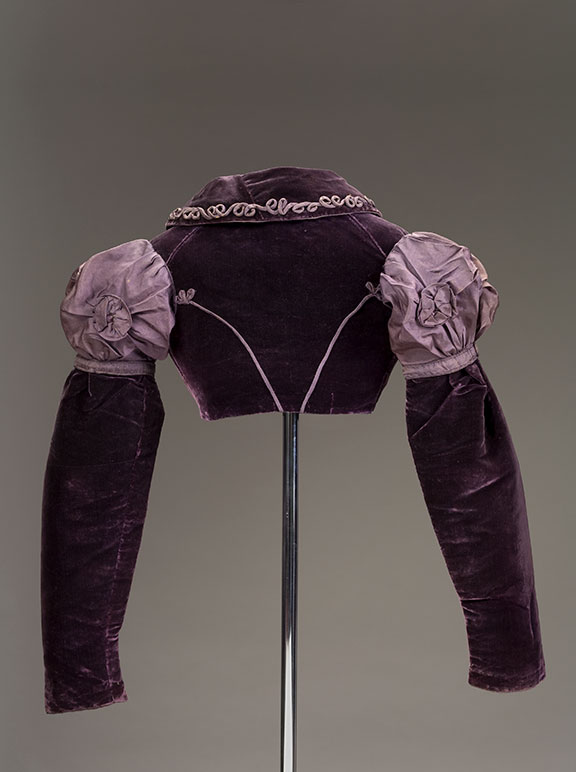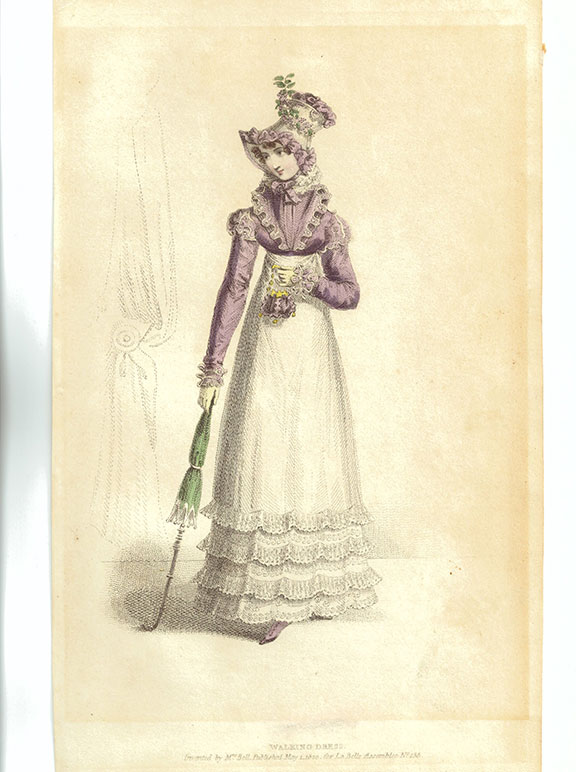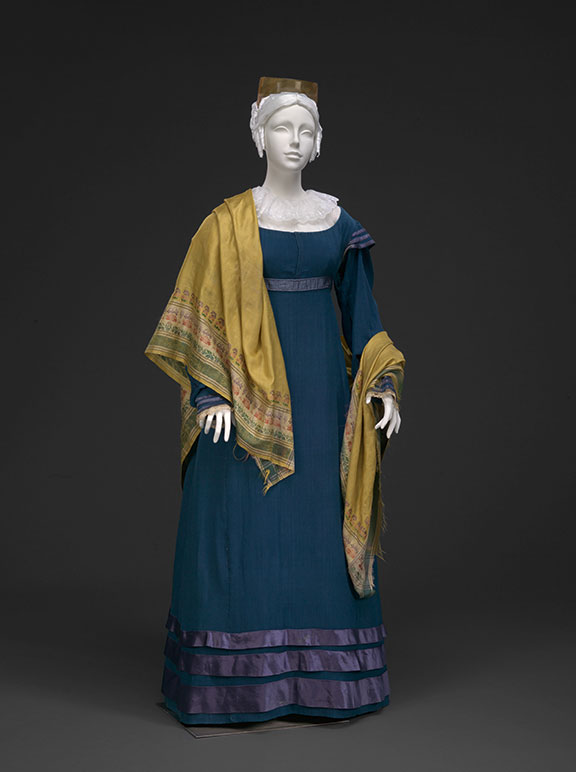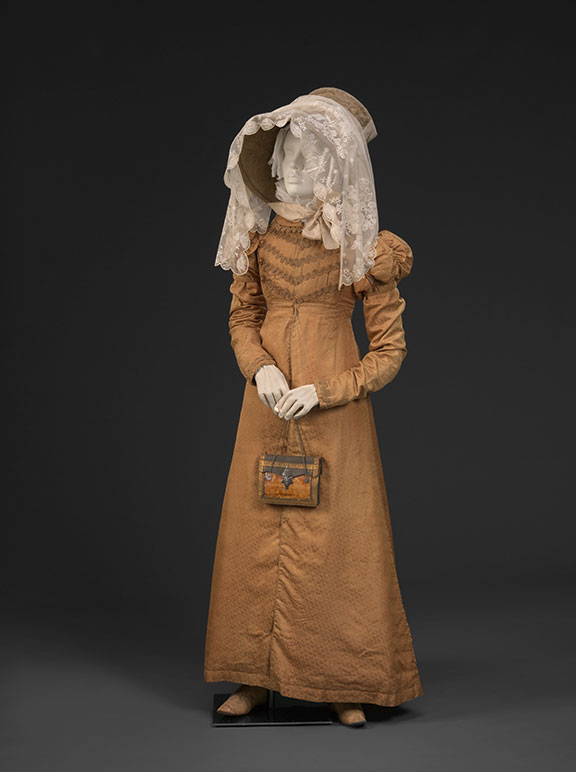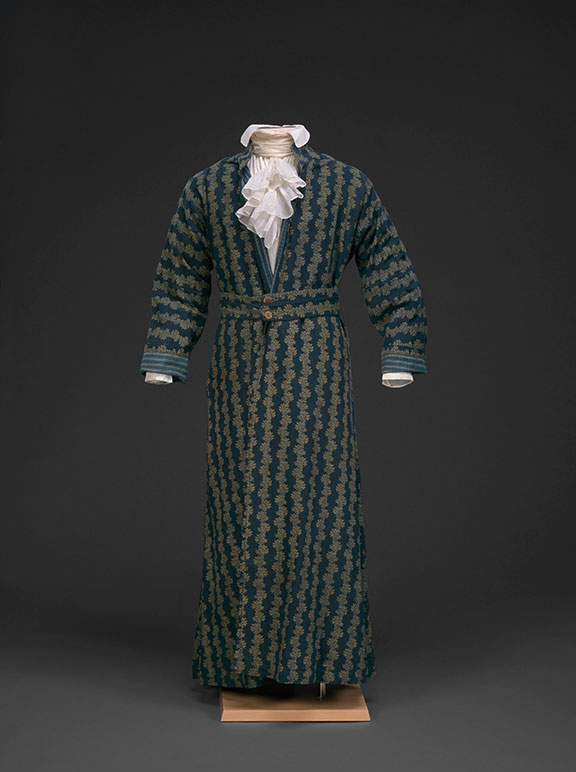Velvet Spencer
About 1818
Style: The spencer jacket was borrowed from a menswear fad in the 1790s.
Many surviving spencers are quite lightweight and would have been useful in transitional seasons or combined with a shawl. They may also have functioned sometimes more as separates than as outerwear. Numerous surviving white skirts of this period, high-waisted with shoulder straps but no bodices, like the skirt shown here, suggest that spencers may have been worn atop them instead of over a full dress.
Fabric: Spencers were almost always colored, offering striking accent to plain white dresses, but might be silk or cotton, plain or patterned; hats, shoes, and other accessories often color-coordinated with them.
Here, velvet combines with silk twill to offer contrasting color and texture. This striking jacket was the height of chic for the late 1810s, with its Renaissance-revival sleeve puffs combined with military-inspired rows of corded trim along the front. The longer length of the jacket hints at the impending slow return to a more natural waistline.
Silk velvet spencer with silk twill accents, striped silk taffeta lining, 4728, gift of Elizabeth S. Garfield; white cotton skirt with woven windowpane check design, flounces, and shoulder straps, late 1810s, private collection; cotton stockings, 1820s, 3231, gift of Grace Harvey Rheinstrom; black leather shoes, late 1830s, 3142, gift of Mary Augusta Rand; steel “Berlin work” purse, French, 1790-1810, 726, gift of Richard H. Thompson; reproduction bonnet in the style of 1818, made and lent by Lydia Gerbig Fast.
View of the back.
A purple spencer and white flounced skirt from La Belle Assemblée (London), 1820. Courtesy Louisa Rauth.


